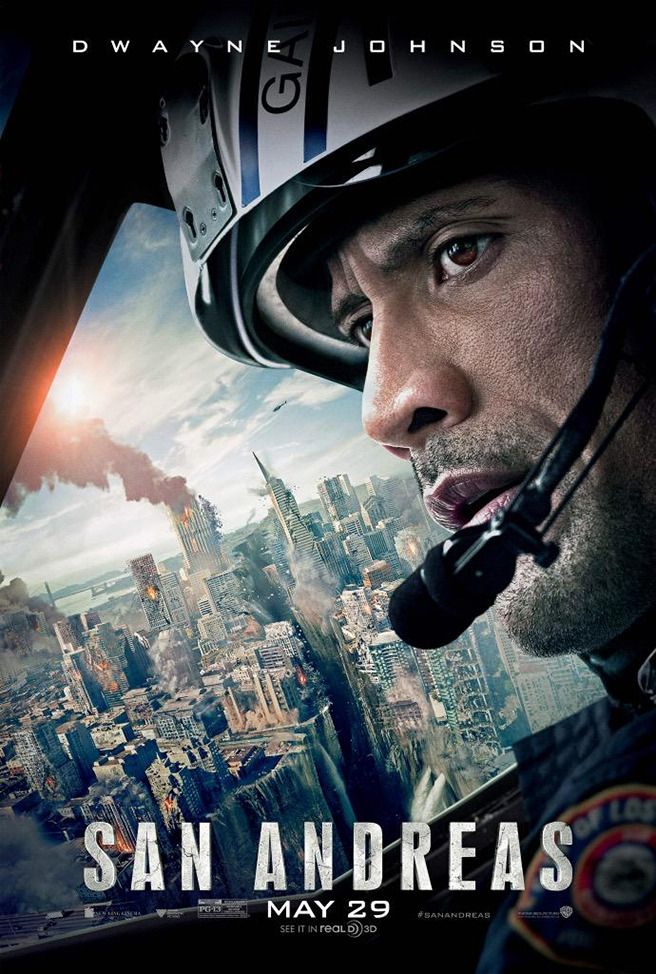It’s been over
40 years since the last major motion picture on the great California earthquake
(1974’s ‘Earthquake’ starring Charleston Heston and Ava Gardner in case you’re
wondering), and like the next Big One it is “long overdue.” 150 years or so overdue to be exact,
according to the Caltech scientist played by Paul Giamatti in Brad Peyton’s
$100 million-plus epic disaster movie ‘San Andreas,’ in which a 9.1 magnitude
quake devastated Los Angeles and San Francisco along the infamous San Andreas
fault line. Thanks to the rubbish
“disaster porn” we’ve seen over the past two decades from such Irwin Allen
hacks as Dean Devlin and Roland Emmerich, I’ve been turned off to this genre
but decided to give ‘San Andreas’ a look since I live in the San Gabriel
Valley. Call it morbid curiosity if you
will.
WWE superstar-turned-actor
Dwayne “The Rock” Johnson’s stock continues to rise in his role as a LAFD
rescue pilot caught in the middle of the Big One. Plot-wise, all disaster movies are the same:
a small group of survivors are either desperately trying to survive amid all
the destruction and chaos, or attempting to reunite with their loved ones, or
both. I guess when our world is literally
falling apart around us, we’re predictable and our actions become primal and
instinctual. Yup. In ‘San Andreas,’ Dwayne Johnson and his
estranged wife (Carla Gugino) put aside their estrangement and try to reach
their daughter (Alexandra Daddario) who’s stranded 380 miles north in San
Francisco.
For all its
simplicity and predictability, ‘San Andreas’ is a fairly decent entry in the
natural disaster genre largely due to its unannoying main characters (Johnson,
Gugino, Daddario and a couple of young British chaps), even if their hair-raising,
split second narrow escapes test the limits of our credulity. Their trials and travails during the Great
Quake of Los Angeles and San Francisco provided the human and emotional
linchpin of the movie, which otherwise is little more than an ongoing sequence of awesome
CG-rendered destruction on an epic scale that beggars belief. Or as William Shakespeare would say in Act
V, Scene V of ‘Macbeth’: “All full of noise and fury, signifying nothing.”
Grade: B


No comments:
Post a Comment